Here are the final shots for POV!



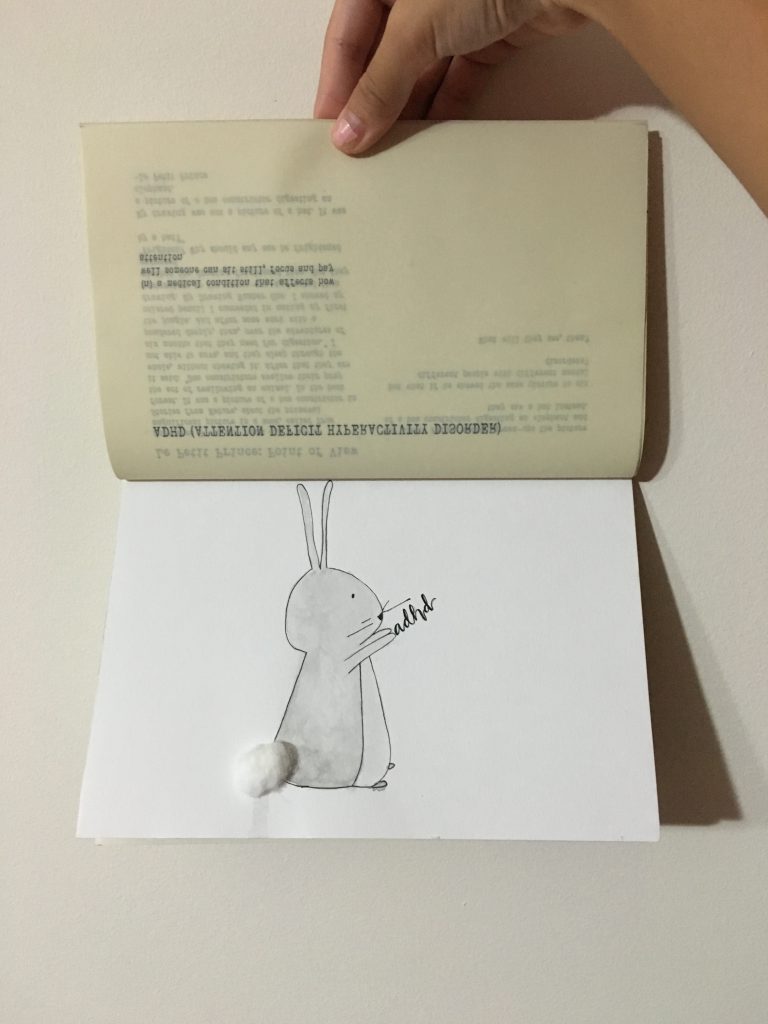










Bite-sized work all in one page
Here are the final shots for POV!














Here are the final shots I took of Imaginary Lines:


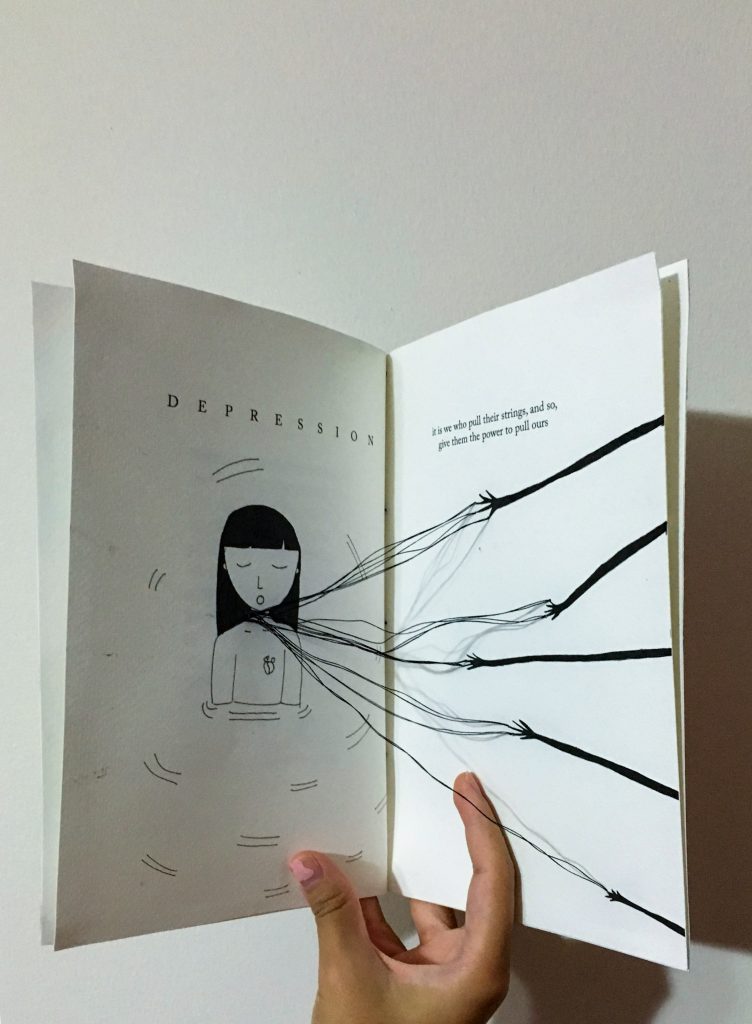


These are the digital version of my intended zine. I decided to add an introduction about my POV adaption along with an abstract of The Little Prince where he was explaining about the story of the boa constrictor. Also, before every POV piece I added the title and the meaning of the illness.








So now that I’ve decided on my work and also illustrated them, it’s time to edit them into InDesign!
The cover page would be printed onto the paper that I did marbling on

Above the poem, I decided to leave it blank because after printing it would, I wanted to cut a hole and sew threads across the hole.


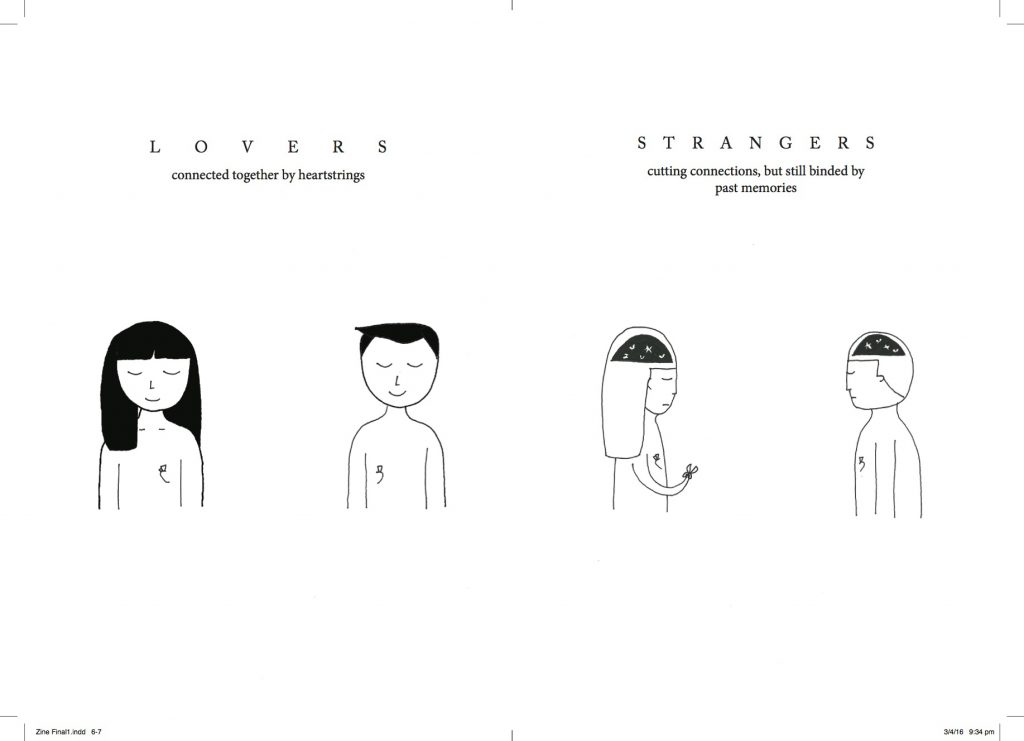
I decided to do another page of marbling for the back page too and my name would be printed on it.

During consultation Ina really liked my set of POV and she suggested if I could do a zine on it so I thought why not, since the works were already done, all I needed to do was to just come up with the cover page and the introductions.
I decided to do a cover page of the boa constrictor from The Little Prince as that was what the adaptation of my POV came from. Also, to show my readers where the story came from I decided to illustrate the font into the boa constrictor, also a reference from my POV works, where I illustrated what people with mental illnesses saw inside the boa constrictor.
I did the illustration once, and I was very pleased with it so I decided to scan and use it for my cover page.
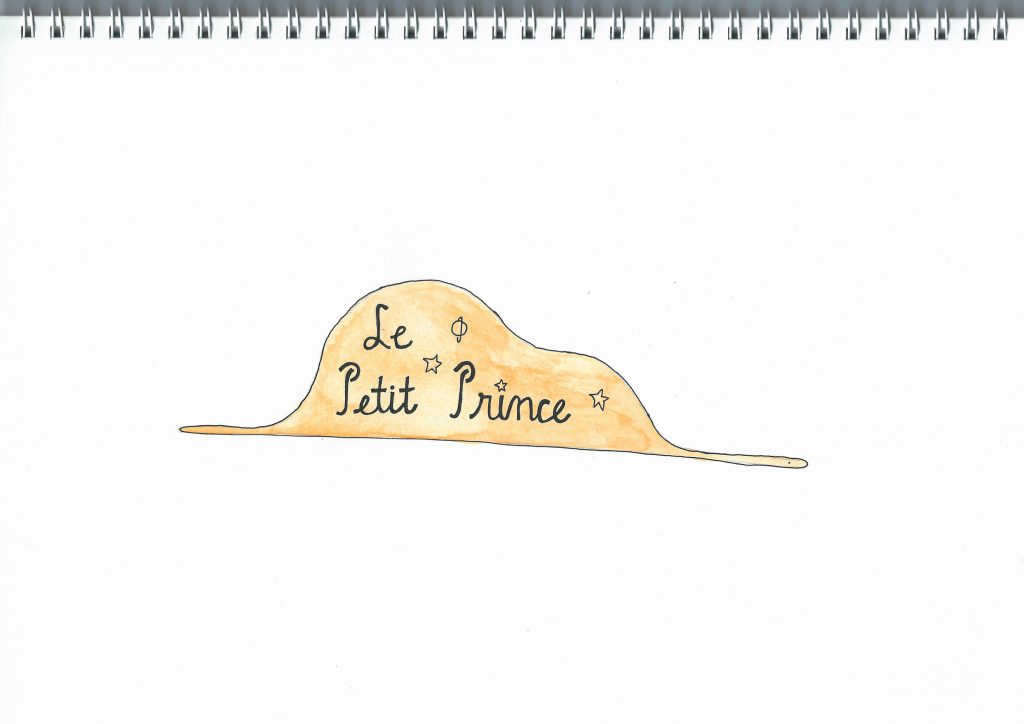
Now that I’ve decided on my topic, I started to brainstorm for the content and because my Depression piece from POV was the inspiration, I knew I wanted to include that into my zine. After much consideration I decided on 4 topics in my zine:
And so I did a few sketches in my sketchbook just to get an idea of what I wanted to do:




I really liked this technique of marbling so I decided to use this as my cover page, also to play on the idea of when someone sees it they would expect something abstract but they would be surprised to see it’s something entirely different when they open the zine. 🙂
This was done using water and marbling paint.

I decided to redraw the illustration for Lovers and Strangers because I felt that a softer image of both characters would fit the book perfectly.


Task 1: Researching the site – ADM Library
Layout of ADM Library:

Majority of the people who uses the space in the library are students, and they go there to either kill time, relax or study. However I realised that they usually go there alone and they behave quietly, and are reserved. They hardly use the book shelves, unless for modules like Art History but they have a high level of interaction with the furniture there.
Developing Idea
I was keen on the idea that although there was not much interaction between the people there, one thing that connects them together is the use of space. So what I initially wanted to do was using the idea of an image to collect stories of people. Everyone has their own stories and this is what is common between them and if they write their stories down in a book, they are connected within this book but at the same time there is no need for an interaction between them, much like how the space of the library is.

I was inspired by my 2D module where we had to do a zine for our last project and I decided to do a book instead of something else like a blog as I like the idea of keeping stories in something physical, that to me gives more weight and value to the stories of people.
Hand sewn book:

After consultation I was given the task to do on a certain topic I wanted to get out from my audience, instead of an open ended book.
First draft of 1000 Things To Eat For Your Last Meal On Earth:
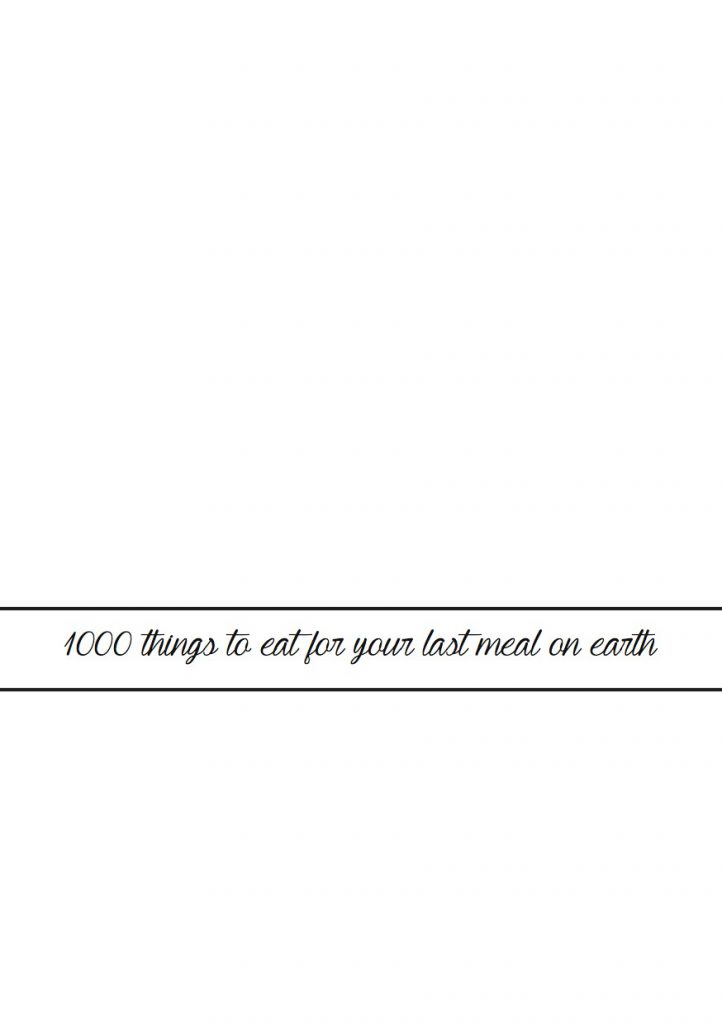

I decided that the cover page was too plain, and I had to add an image on the book cover.
Initially I wanted to do a book where people would write what they would want for their last meal on earth and there would be 1000 of them. So when the book was filled up there would be 1000 different things of what people would want to have, but I realised that to me there wasn’t any meaning of the number ‘1000’ so I decided to just change the title to ‘Last Meal’.
Last Meal
If you could decide, what would your last meal on Earth be? Last Meal invites the audience to take part and write down what they would like to have as their last meal on earth, and why. The aim for this installation is to explore the endless possibilities a person’s experience has in relation to food, and for them to reflect on the meaning of what their last meal would be.
Digitally designed, hand bound pieces of paper using thread to produce a book. A5 (5.83” x 8.27”).
Digital version of installation:
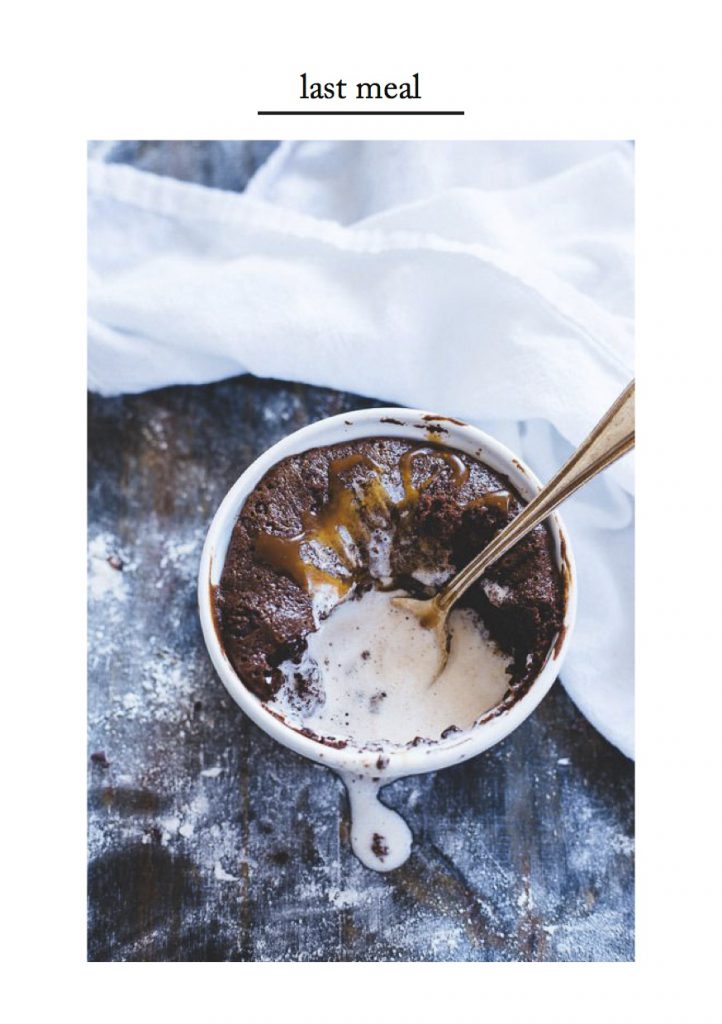

Hard copy version of installation:
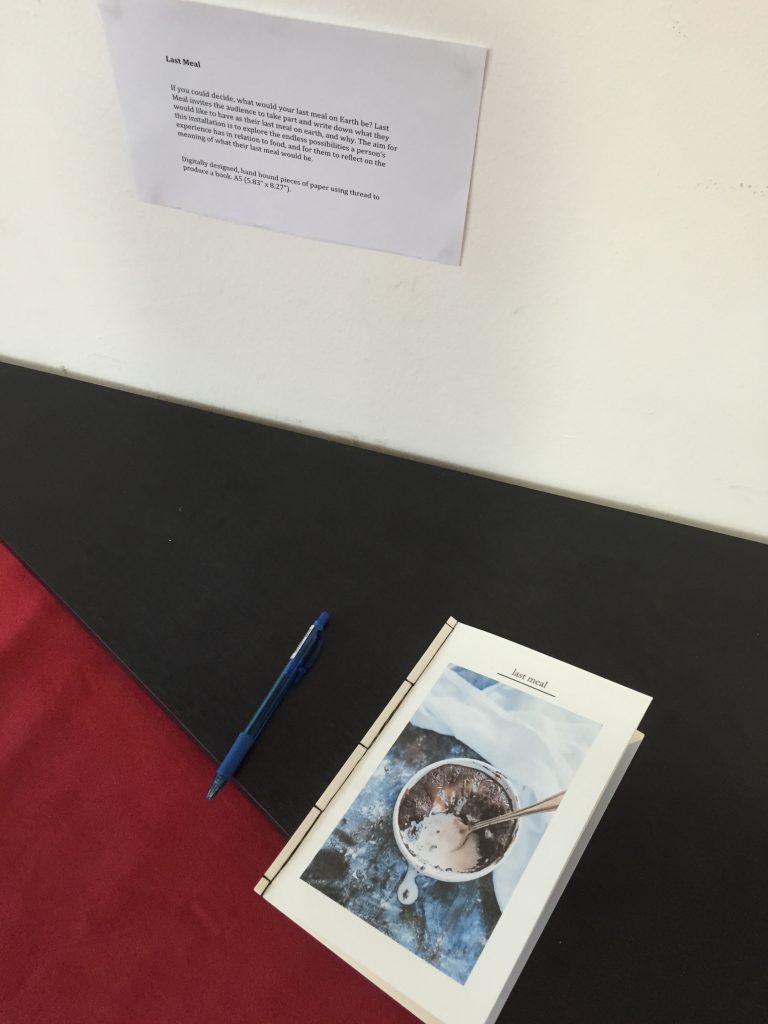
Exploring my identity as a Chinese has always been a big part of my life. Although my dad is Chinese, we speak English at home and I often have difficulty understanding my grandmother when she speaks Cantonese to me. My family is not traditional, we don’t celebrate Chinese New Year like every other Chinese family, all we do is to go to my grandmother’s house for reunion dinner.
So this time I decided to explore Chinatown in hopes of finding something that tells me there is a connection between this place, myself, and my identity.
Home: As a form of an object
Video: Image and sound
Having grown up hearing my mum in the kitchen cooking, the sound of chopping, slicing, sizzling meat etc has now become something familiar. After 21 years I have already formed an attachment to this sound and just hearing it from the kitchen makes me feel warm and homely. Likewise, something feels amiss if I don’t hear it. Also, meal times are the only time my whole family come together and share a table, and even if we don’t talk at all I still leave the table feeling good, as if we all had a conversation through mind reading.
Brief discussion:
Creating narratives using still images allows you to picture the situation in your head, usually based on your own experiences while moving images are really just what you see is what you get (unless abstract, then imagination comes into play). To me, this could be both an advantage and a disadvantage. Being able to imagine gives you freedom of how you want to view the work, but it can also mean that you might not be able to understand fully the artist’s intentions. However when sound comes into play, it is a sign that makes you think in a certain direction that the artist intended to and it can also enhance the experience of the work, where you might be able to perceive smell and sometimes taste (in the case of my work, you probably can perceive both smell and taste based on your own experience and memory which could be a nostalgia of your mum’s cooking).